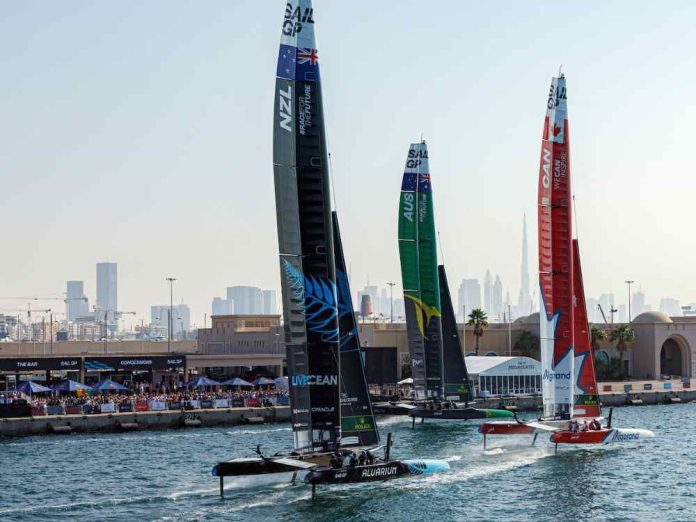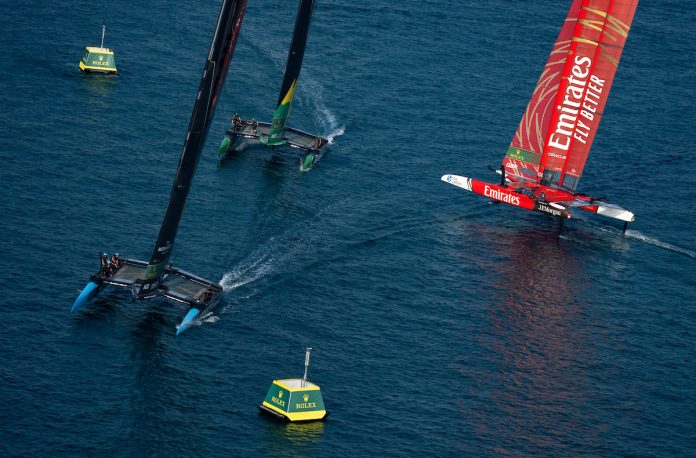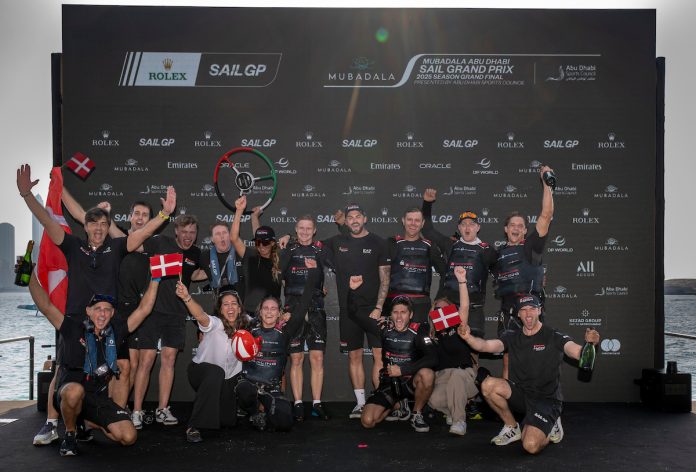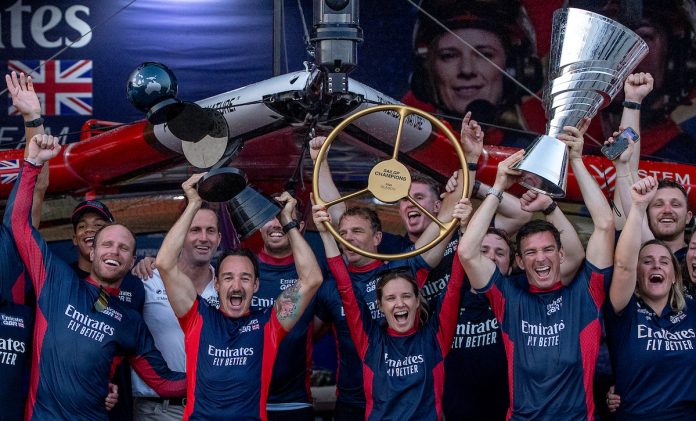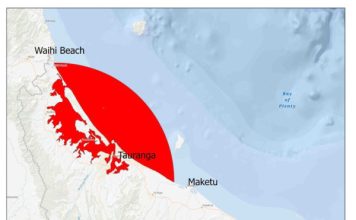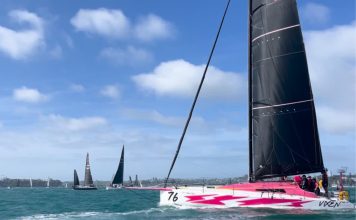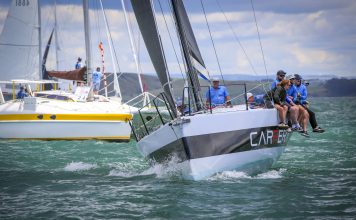The Fundamentals of the SailGP Racecourse
While the specifics of a SailGP racecourse may change to adapt to weather or venue constraints, the core principles remain the same: racing on a windward (upwind) and leeward (downwind) course.

The race committee defines the exact course layout no later than five minutes before the starting signal. This flexibility allows organisers to respond to shifting conditions, ensuring fair and exciting competition. However, regardless of adjustments, the structure is always based on a windward/leeward configuration:
- Start Line: The central point where the race begins.
- Windward Mark: Positioned directly upwind from the start line, marking the top of the course.
- Leeward Gate: Situated directly downwind from the windward mark, at the bottom of the course.
This layout ensures races remain dynamic and challenging, no matter the conditions.
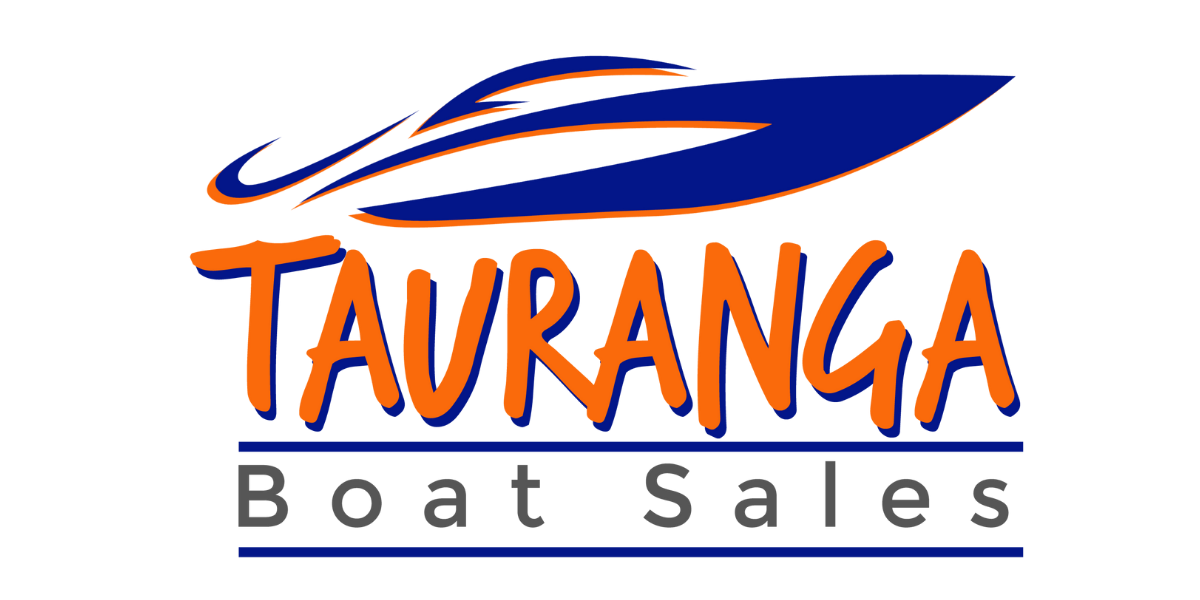
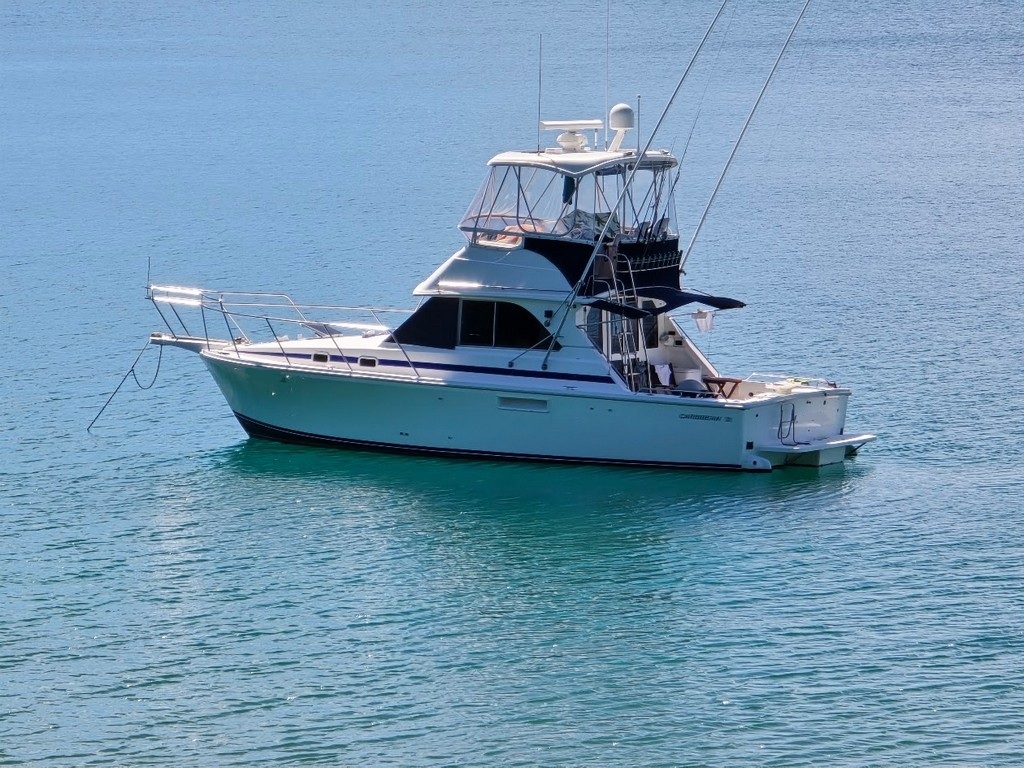
Navigating the Racecourse
One of the most exhilarating moments in a SailGP race occurs right at the start. Boats launch into the first leg, racing at blistering speeds on a reach (a fast point of sail) towards the Speed Mark—the first turning point of the course.
The Course Flow
- Reaching Start: The boats sprint from the start line to the speed mark.
- Downwind to the Leeward Gate: Competitors head to the leeward gate, selecting one of two marks to round based on their strategy and position.
- Upwind to the Windward Gate: After passing through the leeward gate, the boats sail upwind to the windward gate.
- Repeating the Loop: This cycle of upwind and downwind legs continues for the designated number of laps.
- Finish Line: The race concludes as the boats cross the finish line, often in dramatic and nail-biting fashion.
This configuration ensures a mix of high-speed action, tactical manoeuvres, and strategic decision-making, keeping fans and sailors on the edge of their seats.
Starting Procedures
In SailGP, races begin with the entire fleet already in motion—there’s no standing start. Instead, boats position themselves carefully during the pre-start phase, aiming to hit the start line at maximum speed the moment the starting signal sounds.
How It Works
- A countdown sequence alerts sailors, with all boats required to be inside a defined starting area at a set time.
- As the countdown nears zero, the fleet accelerates towards the start line, jostling for the best position.
- Crossing the start line is allowed only after the starting signal. Any boat crossing prematurely is declared OCS (On Course Side) and penalised.
This moving start format not only tests the sailors’ precision and timing but also adds to the spectacle, with boats often reaching breakneck speeds as they approach the start line.
Adapting to Conditions
Weather plays a significant role in shaping the SailGP racecourse. The race committee has the authority to adjust the course’s length and position to suit conditions, ensuring safety while maintaining the excitement.
As a result, no two SailGP races are ever the same, even at the same venue. This adaptability allows for thrilling races that challenge the sailors’ versatility and decision-making skills.
A Spectacle for Fans and Sailors
The combination of ever-changing racecourses, high-speed starts, and tactical brilliance makes SailGP one of the most captivating sailing competitions in the world. Whether you’re a seasoned sailor or a newcomer to the sport, understanding the basics of the racecourse can enhance your appreciation of the action-packed drama unfolding on the water.
Hashtags
#SailGP #SailingLife #HighPerformanceSailing #RaceDay #SailingFans #FoilingBoats #WindwardLeeward #OnWaterAction








